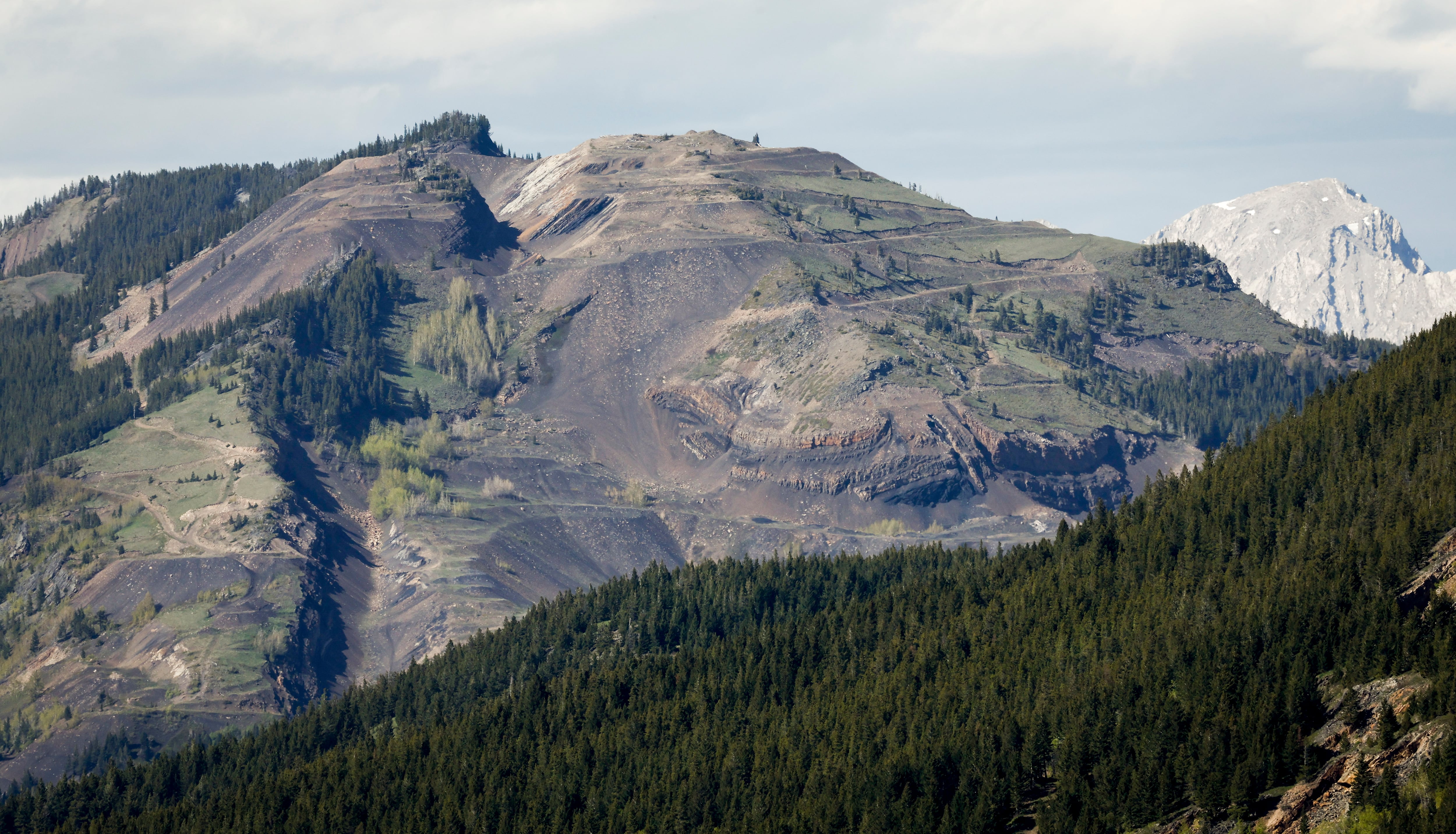Grassy Mountain (left peak) and the Grassy Mountain Coal Project are seen north of Blairmore, Alta., on June 6, 2024. Changes are needed if Canada is to secure investments in its own resource development, expert says.Jeff McIntosh/The Canadian Press
The federal Conservatives and Liberals are in a bidding war to cut red tape for major resource projects that will help Canada weather the economic storms brought by the U.S. tariff war.
Liberal Leader Mark Carney and Conservative Leader Pierre Poilievre have both promised to fast-track approval processes: Mr. Carney says regulatory reviews for projects should take no more than two years, while Mr. Poilievre says he would set a maximum of one year.
But similar promises have been made across the country before with limited effect. Court cases, Indigenous consultation and the complexity of major projects with potential environmental consequences have all stymied many an enthusiastic politician.
Richard Masson, an executive fellow at the University of Calgary’s School of Public Policy, said there’s a reason the timelines are long. It can take several years of planning and engineering just to define the scope of a project enough to begin baseline environmental studies and consultation with Indigenous and local stakeholders.
“I would be surprised if this type of limit could work without substantial legislative change. Indigenous stakeholders have rights that are enforceable beyond the ability of Parliament to change,” said Mr. Masson, who has served as the director of oil sands policy and development for the Alberta Energy Department.
He said that changes are needed if Canada is to secure investments in its own resource development.
“There needs to be a better way than our current system – but finding it and implementing it will take sustained effort from skilled leaders across the country.”
The Ring of Fire’s long development timeline
The Ring of Fire – an area of rich nickel and gold deposits in a remote section of Northern Ontario – shows that it takes more than political will to get shovels in the ground.
In the early 2010s, Dalton McGuinty’s Liberal government promoted the Ring of Fire as a means to jump-start Ontario’s economy. In 2018, Progressive Conservative Leader Doug Ford vowed to do what the Liberals could not, saying he would hop on a bulldozer himself to get construction started.
Mr. Ford has served almost seven years as premier, but in the recent Ontario election, he was still campaigning on potential development in the Ring of Fire. His government says it has given its bureaucrats a limit of 24 months to review large renewable energy proposals. But proposals to tap those deposits remain stalled, currently awaiting a regional assessment by the Impact Assessment Agency of Canada.
What the Conservatives have pledged
To fast-track development, the federal Conservatives have pledged to establish a single authority, the Rapid Resource Project Office, to manage regulatory approvals across all levels of government. That office would be given a target of six months to handle project assessments, with a maximum one-year decision window. This would require co-operation with provincial governments to manage all approvals through a single department.
For projects that cross provincial boundaries, Mr. Poilievre said he would create a national energy corridor. Under this model, the federal government would fast-track transmission lines, railways, pipelines and other critical infrastructure by preapproving projects inside the corridor. That preapproved route would require approval of the premiers.
What the Liberals have pledged
The Liberals under Mr. Carney have proposed a “one window” approval process for assessing large infrastructure and natural-resource projects. The goal is to minimize redundancies across federal departments by streamlining permit applications required under federal laws such as the Fisheries Act. For most projects, the Liberals say, the federal government would recognize provincial environmental and impact review processes and decisions.
The Liberals would require all federal regulatory authorities, including the IAAC, to complete their review of projects that serve the national interest on a two-year timeline. Mr. Carney has also promised to ensure that Indigenous consultations related to federally regulated infrastructure projects such as rail expansions, port upgrades and nuclear energy projects are held within “clear, predictable, and competitive timelines.”
Less talk, more action
The head of the Mining Association of BC, Michael Goehring, said both parties are offering encouraging ideas, but it will take more than promises to secure new mining investments.
“There has been too much talk and not enough action, both at the federal and at the provincial levels,” he said in an interview.
A key component of both parties’ proposals is already in place in British Columbia, he noted, and this should be a model for the country, helping to fast-track approvals and remove uncertainty around resource development.
In 2018, the federal government and B.C. agreed to a single environmental assessment process for major projects, which allows Ottawa to substitute the B.C. assessment for its own. The pact was updated in March with additional commitments to streamline critical-mineral mine projects. It can still take up to 10-12 years to get a mining project through the regulatory process in B.C., Mr. Goehring said, but it is far less onerous than before.
The post Carney and Poilievre have promised they’ll get major resource projects done faster, but is that actually possible? appeared first on World Online.

